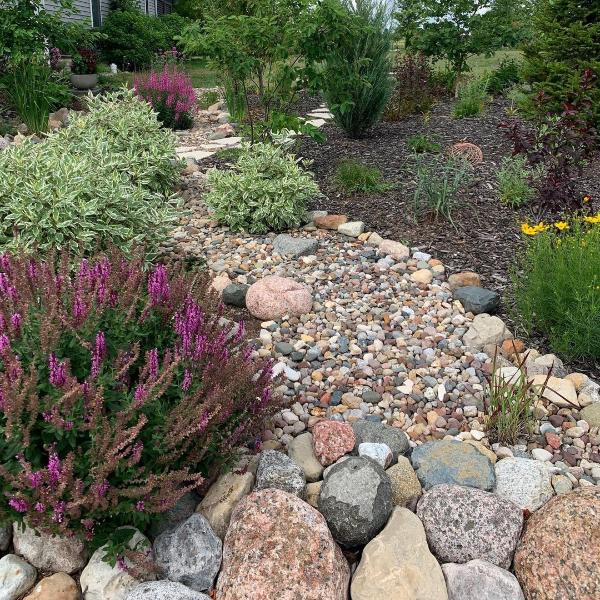Hilton Head Landscapes for Dummies
Table of ContentsExamine This Report about Hilton Head LandscapesAll About Hilton Head LandscapesHilton Head Landscapes Fundamentals ExplainedThe 7-Minute Rule for Hilton Head LandscapesHilton Head Landscapes Can Be Fun For AnyoneHow Hilton Head Landscapes can Save You Time, Stress, and Money.The Ultimate Guide To Hilton Head Landscapes
Line creates all kinds and patterns and can be used in a range of methods in the landscape. Line in the landscape is developed by the side between two products, the rundown or silhouette of a form, or a lengthy direct feature. Lines are an effective device for the designer because they can be used to develop a boundless range of shapes and forms, and they control movement of the eye and the body.

Lines in the landscape. The buildings of lines establish just how individuals respond to the landscape, both psychologically and physically.
A Biased View of Hilton Head Landscapes
Bent lines develop a casual, all-natural, kicked back personality that is associated a lot more with nature and unbalanced balance. Rounded lines relocate the eye at a slower pace and add enigma to the space by producing surprise views.
Upright lines in the landscape consist of tall, narrow plant material, such as trees, or high frameworks, such as an arbor or a bird home on a post. Straight lines move the eye along the ground aircraft and can make a space feel bigger. Reduced lines are more suppressed and develop a sensation of remainder or repose.
Some Of Hilton Head Landscapes
Lines are also developed by the upright forms of constructed attributes and plant material. There are three key line types that create type in the landscape: bedlines, hardscape lines, and plant lines.
Bedlines attach plant product to the home and hardscape since the eye follows the line, moving the stare with the landscape. Hardscape lines are produced by the side of the hardscape, which delineates the developed structure. Line can likewise be created by lengthy and narrow materials, such as a fencing or wall.
All About Hilton Head Landscapes
Form is found in both hardscape and plants, and it is generally the dominant visual aspect that spatially arranges the landscape and frequently figures out the design of the garden. The type of frameworks, plant beds, and yard ornaments additionally identifies the overall type theme of the yard. Formal, geometric types consist of circles, squares, and polygons.
Plants create form in the garden with their lays out or silhouettes, but type can additionally be defined by a gap or unfavorable room between plants - landscape design hilton head (https://www.goodreads.com/user/show/179629915-steven-gonzales). Circles can be cycles, or they can be divided right into half circles or circle sectors and integrated with lines to develop arcs and tangents
The smart Trick of Hilton Head Landscapes That Nobody is Talking About
Circles are a click this strong design form because the eye is constantly drawn to the facility, which can be used to stress a focal point or attach other kinds. Circular types in hardscape and lawn panels.
The square kind can also be segmented and pre-owned continuously to develop a grid pattern. Unlike circles, squares are more powerful on the brink, which can be aligned or overlapped to create special patterns and even more intricate forms. Polygons are many-sided types with straight edges. Triangles, for instance, are three-sided polygons.
Twisting lines commonly imitate the all-natural program of rivers or streams and can be referred to as smooth lines with deeply curved undulations. Twisting lines (Number 3) function well for pathways, plant bedlines, and dry stream beds. Twisting lines can add passion and enigma to a garden by leading audiences around edges to uncover brand-new sights and rooms.
The 6-Second Trick For Hilton Head Landscapes

Typical plant forms are well established and standard, as type is the most consistent and recognizable feature of plants. Type can also be developed via the massing of plants, where the general mass creates a various kind than a private plant.
An extremely contrasting form must be used with careone or 2 work well as a focal factor, however way too many produce disorder. All-natural plant forms, instead of over-trimmed types, need to establish the bulk of the structure. The relevance of total kind is much more or much less depending on the viewing perspectivethe form of a tree can appear quite various to a person standing under the cover versus viewing the tree from a range in an open field.
Not known Details About Hilton Head Landscapes
Plant kinds also create and define the gap or open rooms between the plants, producing either convex or scooped kinds in the voids. High-arching tree branches generally produce a concave open area under the branches, and a rounded cover with reduced branches fills the space to produce a convex type in the open area under the tree.